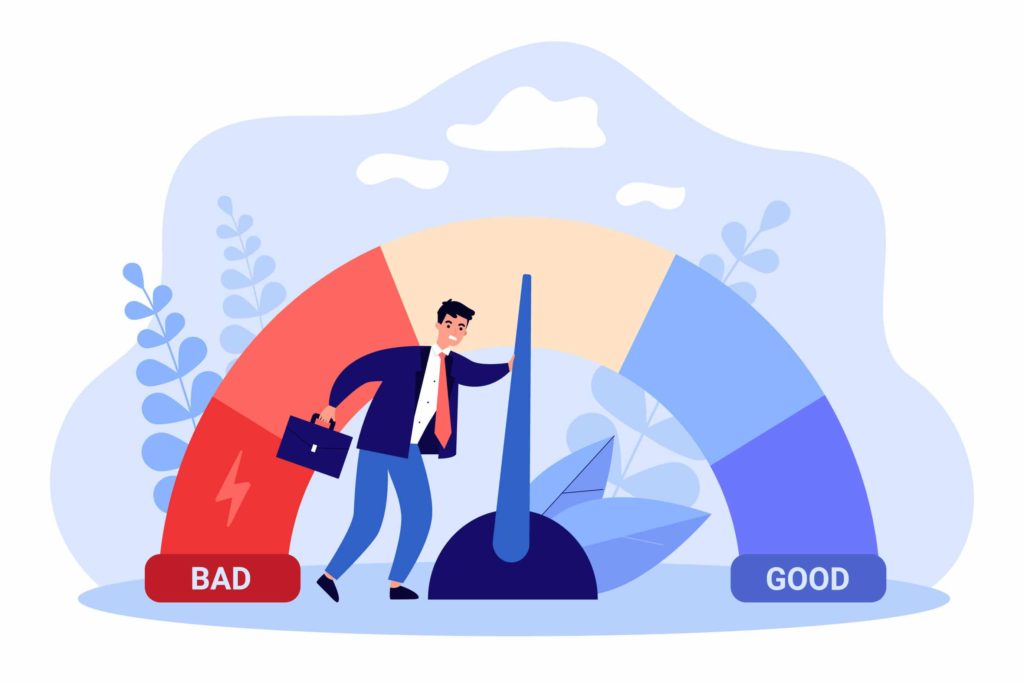I Don’t Need Therapy Anymore
by Anonymous | Thursday, Nov 17, 2022
Little sixth grade me would be shocked I am writing this right now because during my first year in middle school, I began to have suicidal thoughts. I was asocial, meaning I was withdrawn and had no interest in socializing (APA Dictionary of Psychology), I had no friends, and I was diagnosed with Generalized Anxiety Disorder (GAD) and Major Depressive Disorder, which are common comorbidities1. Eventually, my thoughts were so out of control due to my illnesses and the situations I was put in because of my illnesses, I was Baker Acted (involuntarily institutionalized), put on antidepressants, and sent to therapy weekly. So, now you may be wondering, why in the world would I title the blog the way I did. Shouldn’t I be in therapy like… forever? Well, last week my therapist told me that I don’t need her anymore! 2 Because of my personal experiences, I know that no matter how hopeless one’s situation may appear, effective behavioral health care is available.
Generalized Anxiety Disorder is, essentially, when someone is persistently worrying. To have GAD, someone must have anxiety for at least six months, significant distress and/or impairment, and at least three other symptoms, which can include poor concentration, edginess, and fatigue (Comer & Comer, 2021). When someone has Major Depressive Disorder, they go through depressive episodes, periods of deep sadness and feelings of hopelessness3 (Mayo Clinic, 2018). To be diagnosed with Major Depressive Disorder, one must have a depressive episode lasting for two or more weeks with a total of at least five symptoms falling into the following categories: emotional symptoms, motivational symptoms, behavioral symptoms, cognitive symptoms, and/or physical symptoms (Comer & Comer, 2021).
While many of the symptoms for these two disorders overlap, like sleeping too much, they affected me in different ways. For instance, even if I got over the barrier of being unmotivated to socialize from my depression, I began to have anxiety about people judging me. Therefore, because I have both depression and anxiety, breaking the cycle I had fallen into of avoiding life was even harder.
The path to get to where I am today required I utilize a variety of different methods, such as medication and multiple kinds of therapy. For me, Cognitive Behavioral Therapy (CBT) was the most effective. CBT combines cognitive techniques, such as challenging your patterns of thinking, and behavioral aspects, like changing or stopping unhealthy habits (Informed Health, 2006). My therapist found behavioral activation, which is a technique of CBT, produced the most improvement. In behavioral activation, I had to push myself to socialize, do smaller, manageable homework assignments, and go to school more often because I was very unmotivated and, basically, not functioning.
As a college student, you probably know that once you fall behind in classes, it is very hard to catch up. To recover successfully, you must catch up on the material you missed, while also learning new material at the same time. Juggling all this at once is a challenge. While it isn’t a perfect analogy, you can kind of think about my past situation as trying to catch up, not just in school, but in life. My progress was in baby steps, but I started doing homework assignments and being social again. Trying to get back my motivation and catch up in school took a lot of tears and breakdowns, and it did not take a week; It was more like a rollercoaster because I went up, back down, and then up a little higher, etc. And, by the time I felt a little better, I was thrown back into the jungle that we call “middle school.” Let’s just say middle schoolers are brutal. Fortunately, because I was already in therapy, and I had some skills on-hand to be able to deal with problems on my own. So, while having someone to talk to about one’s problems is nice, therapy also is useful because one can learn techniques on how to deal with issues in a manner that is helpful and, of course, not make things worse.
Basically, I was not an easy client and thank Gd I already had a supportive team working with me. Let me say this, though: While I said that I do not need therapy anymore, it doesn’t mean that I am not going to have problems. So, I think that having a supportive, positive person to talk to is ALWAYS a good idea. If you feel that you are in need of someone to talk to, try meeting with counseling services at FAU (website: https://www.fau.edu/counseling/). If you even feel stuck in a situation or unmotivated, it is a good idea to ask for help. Just know that “this too shall pass.” Good moments will not last forever, but neither will the bad.
Footnotes:
1 Comorbidities are two illnesses that occur at the same time (APA Dictionary of Psychology).
2 However, I will still see her because I don’t want to bottle up my emotions like I did in the past.
3 If these symptoms are accompanied by a history of mania, then the diagnosis would be Bipolar Disorder (Comer & Comer, 2021).
Sources:
American Psychological Association. (n.d.). APA Dictionary of Psychology. American Psychological Association. Retrieved September 5, 2022.
Comer, R. J., & Comer, J. S. (2021). Abnormal psychology (11th ed.). Worth Publishers/Macmillan Learning.
InformedHealth.org [Internet]. Cologne, Germany: Institute for Quality and Efficiency in Health Care (IQWiG); 2006-. Cognitive behavioral therapy. 2013 Aug 7 [Updated 2016 Sep 8]. Available from: https://www.ncbi.nlm.nih.gov/books/NBK279297/
Mayo Foundation for Medical Education and Research. (2018, February 3). Depression (major depressive disorder). Mayo Clinic. Retrieved September 10, 2022, from https://www.mayoclinic.org/diseases-conditions/depression/symptoms-causes/syc-20356007
Sreenivas, S. (2021, November 17). Comorbidity: What to know. WebMD. Retrieved September 10, 2022, from https://www.webmd.com/a-to-z-guides/what-is-comorbidity
Generalized Anxiety Disorder is, essentially, when someone is persistently worrying. To have GAD, someone must have anxiety for at least six months, significant distress and/or impairment, and at least three other symptoms, which can include poor concentration, edginess, and fatigue (Comer & Comer, 2021). When someone has Major Depressive Disorder, they go through depressive episodes, periods of deep sadness and feelings of hopelessness3 (Mayo Clinic, 2018). To be diagnosed with Major Depressive Disorder, one must have a depressive episode lasting for two or more weeks with a total of at least five symptoms falling into the following categories: emotional symptoms, motivational symptoms, behavioral symptoms, cognitive symptoms, and/or physical symptoms (Comer & Comer, 2021).
While many of the symptoms for these two disorders overlap, like sleeping too much, they affected me in different ways. For instance, even if I got over the barrier of being unmotivated to socialize from my depression, I began to have anxiety about people judging me. Therefore, because I have both depression and anxiety, breaking the cycle I had fallen into of avoiding life was even harder.
The path to get to where I am today required I utilize a variety of different methods, such as medication and multiple kinds of therapy. For me, Cognitive Behavioral Therapy (CBT) was the most effective. CBT combines cognitive techniques, such as challenging your patterns of thinking, and behavioral aspects, like changing or stopping unhealthy habits (Informed Health, 2006). My therapist found behavioral activation, which is a technique of CBT, produced the most improvement. In behavioral activation, I had to push myself to socialize, do smaller, manageable homework assignments, and go to school more often because I was very unmotivated and, basically, not functioning.
As a college student, you probably know that once you fall behind in classes, it is very hard to catch up. To recover successfully, you must catch up on the material you missed, while also learning new material at the same time. Juggling all this at once is a challenge. While it isn’t a perfect analogy, you can kind of think about my past situation as trying to catch up, not just in school, but in life. My progress was in baby steps, but I started doing homework assignments and being social again. Trying to get back my motivation and catch up in school took a lot of tears and breakdowns, and it did not take a week; It was more like a rollercoaster because I went up, back down, and then up a little higher, etc. And, by the time I felt a little better, I was thrown back into the jungle that we call “middle school.” Let’s just say middle schoolers are brutal. Fortunately, because I was already in therapy, and I had some skills on-hand to be able to deal with problems on my own. So, while having someone to talk to about one’s problems is nice, therapy also is useful because one can learn techniques on how to deal with issues in a manner that is helpful and, of course, not make things worse.
Basically, I was not an easy client and thank Gd I already had a supportive team working with me. Let me say this, though: While I said that I do not need therapy anymore, it doesn’t mean that I am not going to have problems. So, I think that having a supportive, positive person to talk to is ALWAYS a good idea. If you feel that you are in need of someone to talk to, try meeting with counseling services at FAU (website: https://www.fau.edu/counseling/). If you even feel stuck in a situation or unmotivated, it is a good idea to ask for help. Just know that “this too shall pass.” Good moments will not last forever, but neither will the bad.
Footnotes:
1 Comorbidities are two illnesses that occur at the same time (APA Dictionary of Psychology).
2 However, I will still see her because I don’t want to bottle up my emotions like I did in the past.
3 If these symptoms are accompanied by a history of mania, then the diagnosis would be Bipolar Disorder (Comer & Comer, 2021).
Sources:
American Psychological Association. (n.d.). APA Dictionary of Psychology. American Psychological Association. Retrieved September 5, 2022.
Comer, R. J., & Comer, J. S. (2021). Abnormal psychology (11th ed.). Worth Publishers/Macmillan Learning.
InformedHealth.org [Internet]. Cologne, Germany: Institute for Quality and Efficiency in Health Care (IQWiG); 2006-. Cognitive behavioral therapy. 2013 Aug 7 [Updated 2016 Sep 8]. Available from: https://www.ncbi.nlm.nih.gov/books/NBK279297/
Mayo Foundation for Medical Education and Research. (2018, February 3). Depression (major depressive disorder). Mayo Clinic. Retrieved September 10, 2022, from https://www.mayoclinic.org/diseases-conditions/depression/symptoms-causes/syc-20356007
Sreenivas, S. (2021, November 17). Comorbidity: What to know. WebMD. Retrieved September 10, 2022, from https://www.webmd.com/a-to-z-guides/what-is-comorbidity


